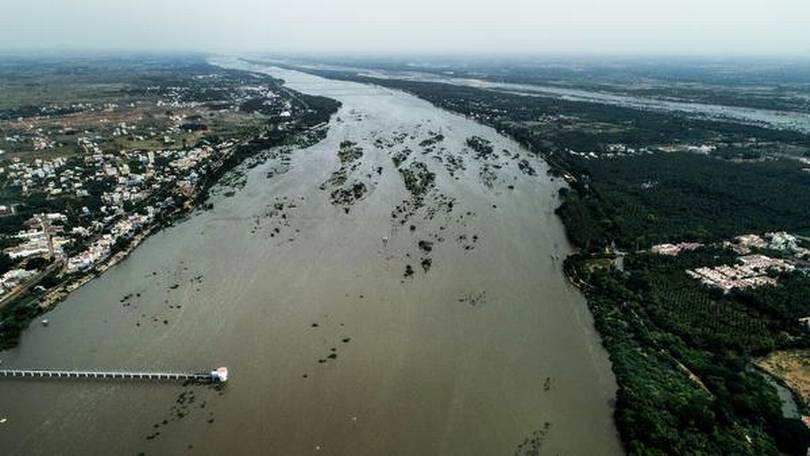
PHOTO: M. MOORTHY
Broad, menacing and gushing, the river has gained new life aided by a generous southwest monsoon
Originating as a small spring at Talacauvery in the Brahmagiri Hills of Kodagu district in Karnataka and through its 802-km journey before emptying into the Bay of Bengal at Poompuhar on the Coromandel coast, the Cauvery evokes strong emotions, both sublime and mundane. The generous monsoon this year has infused new life into the river. All the major dams in Karnataka (Krishnaraja Sagar, Hemavathi, Kabini and Harangi) are brimming over. With the combined rate of outflow from the reservoirs being 75,000 cusecs to 1,00,000 cusecs, the Cauvery, barely visible in summer, is now a river in spate.
Among the more popular sights on its course is the Abbey Falls in Madikeri, where a few natural streams jump off the cliff and join the river downstream. The Lakshmantirtha, a bigger tributary originating from Brahmagiri, jumps down the cliffs in a series of rapid falls from a height of nearly 170 feet to form the Iruppu Falls and snakes through the Nagarahole tiger reserve before merging with the Cauvery at the Krishnaraja Sagar. Meandering and gliding along through the rough and rocky terrain, the Cauvery splits into two and forms the riverine island of Shivanasamudra and presents the breathtaking sight of the Gaganachukki and Bharachukki segmented falls, plummeting from a height of 320 feet (and almost a 1,000 feet wide) with a deafening roar before hitting the rocky gorge below releasing clouds of vapour and foam.
It is at the Hogenakkal falls that the river tumbles down, after traversing for 64 km along the inter-State boundary. The river spreads into the Mettur Dam in Salem district, the largest in Tamil Nadu with a capacity of 93.47 thousand million cubic feet. From Mettur, the river proceeds south and turns eastward.
At the Upper Anicut, or Mukkombu (which is about 15 km above Tiruchi), the Cauvery splits into two, with the southern branch retaining the original name and the other, known as Coleroon (Kollidam in Tamil), and drains into the sea near Portonovo (Parangipettai) in Cuddalore district.
Text by R. Krishnakumar and T. Ramakrishnan
source: http://www.thehindu.com / The Hindu / Home> News> States> Tamil Nadu / July 29th, 2018

